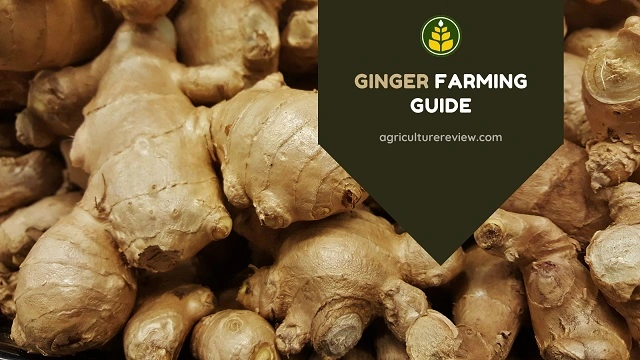From this ultimate guide on pearlmillet or bajra farming get to know soil, climate, temperature, seed rate, field preparartion, sowing, etc.
Pearlmillet (Pennisetum glaucum) is a C4 major coarse grain crop that is commonly cultivated in Asia & Africa. In english language pearlmillet is also known as bulrush, cattail, or spiked millet but in hindi it is called “Bajra”, in Arabic “Dukhn,” in French “Petit mil,” and in Southern Africa “Mahango.”
In India, Southern Africa & some Western countries pearlmillet is a popular food crop. Therefore, if you are a large scale farmer then you can cultivate pearlmillet in your farm to earn good income. But small scale farmers having farm land less than 2.5 acres should cultivate vegetable, medicinal or fruit crops instead of cereal crops to earn high.
Table of Contents
Origin Of Pearlmillet
Researchers believe that pearlmillet originated in Western Africa. India is considered as the secondry center of diversity of pearlmillet.
Area & Production
India is the largest producer of pearlmillet in the world. In India, pearlmillet is cultivated as dual purpose crop (For food consumption & Fodder). 7 million hectares of farmland is used to cultivate pearlmillet in India. Other pearlmillet producing countries are Niger, Nigeria, China, Mali, etc.
Globally, around 30 Million tonnes of pearlmillet is produced annually on 36 Million hectares of farmland.
Pearlmillet Farming Guide

Soil
You can cultivate pearlmillet on wide range of soils. But well draining sandy loam soil having neutral pH is ideal for cultivating pearlmillet crop. You can also cultivate them on slightly alkaline soil or even on poorly fertilr soil, but avoid growing them on saline soil.
Climate & Temperature
This crops prefer to grow well in hot and dry tropical climatic condition. For seed germination, soil temperature should be at least 12o to up most 33o Celsius. And for optimum crop growth, temperature ranging from 22 to 35o Celsius is good. Temperature above 45o Celsius can result in poor crop growth.
For grain setting, temperature around 22 to 25o Celsius is optimum. Around 500 mm rainfall during crop season is good for development of pearlmillet crop.
Varieties Of Pearlmillet
There are several varieties that are under cultivation due to adaptibility, pest & disease resistance, and yield stability. In India, ICAR has recommended these varieities for general cultivation of pearlmillet.
| State | Recommended Variety |
|---|---|
| Rajasthan, Gujrat & Haryana | MH 1468, Nandi 64, Nandi 61, Nandi 65, MH 1617, MBC 2, MH 1421, MH 1486, MH 1446, MSH 203, MH 1617, HHB 226, RHB 177, RHB 173, MSH 203 . |
| Punjab, Delhi, Madhya Pradesh & Uttarpradesh | MH 1468, MH 1617, MH 1446, Pusa composite 612, Nandi 61, Nandi 65. |
| Tamil Nadu | Nandi 64, MH 1578, PAC 909, MH 1540, MH 1541, MSH 203 (Summer season), Shine, Pusa composite 612, Hybrid Co 9. |
| Andhra Pradesh | Shine, PAC 909, MH 1540, MH 1541, Pusa composite 612. |
| Maharashtra | ABPC 4-3, PKV-Raj Hybrid, MSH 203 (Summer season), MH 1540, Pusa composite 612. |
Season For Plantation
Different seasons and timing for plantation of pearmillet in India is given below in the table.
| Seasons | State & Time |
|---|---|
| Kharif | June to July in Karnataka, Maharashtra, Uttar Pradesh, Andhra Pradesh, and Gujrat. July in Haryana, Punjab, Rajasthan and Madhya Pradesh. |
| Rabi | September to October in Tamil Nadu. |
| Summer | January to February in Tamil Nadu, Karnataka, Punjab, Gujrat, and Andhra Pradesh. |
Field Preparation
Avoid sowing seeds in compact and cloddy seedbed as it leads to poor germination. Therefore, for preparing fine seedbed plough field twice or thrice with traditional country plough. If you are cultivating in black cotton soil then use blade harrow to obtain desired tilth.
Seed Rate Of Pearlmillet
Recommended seed rate of pearlmillet for sandy soil is 5 Kilograms hectare-1. However, farmers use 6 to 8 Kilograms per hectare to provide margin for mortality under adverse condition. But overcrowding can lead to poor crop development and reduced yield.
For black cotton soil (Good water holding capacity) seed rate of 3 Kilogram hectare is optimum.
Sowing Method & Spacing
Farmers can sow pearlmillet seeds by broadcasting, or by country plough and seed drill. The most improved and efficient way of sowing seeds is by using three to six tined seed drill. In sandy soil sow seeds at 5 to 7 centimetres depth while in heavy soil sowing depth should be 2 to 3 centimetres.
Spacing: Follow spacing of 30×10 centimetres for getting optimum yield.
Irrigation
Pearlmillet is primarily a rainfed crop. But for summer irrigated crop 6 irrigations is required to get optimum yield. Stages at which you need to irrigate your pearlmillet farm are:
- Transplanting.
- A week after transplantation.
- Three weeks after transplantation.
- During panicle initiation.
- While flowering.
- During grain development stage.
Take extra care during flowering and grain development stage as this crop is most sensistive to moisture stress during this time.
Fertilizers
In one hectare of farm land you can apply 10 tonnes of Farm Yard Manure, or goat penning before plantation. Hybrid varieties require 40 to 150 Kilograms of Nitrogen per hectare for getting optimum grain yield. ICAR has recommended fertilizer schedule for pearlmillet that you can follow to get best results.
| State | N:P2O5 (Kilograms hectare-1) |
|---|---|
| Rajasthan | 20:20 (Rainfed Crop) |
| Maharashtra | 40:20 (Rainfed Crop) |
| Gujrat | 80:40 (Rainfed Crop) |
| Haryana | 40:20 (Rainfed Crop); 120:60(Irrigated Crop) |
| Karnataka | 40:20 (Rainfed Crop) |
| Tamil Nadu | 60:20 (Rainfed Crop); 120:60 (Irrigated Crop) |
| Uttar Pradesh | 40:20 (Rainfed Crop) |
| Andhra Pradesh | 20:20 (Rainfed Crop); 120:60 (Irrigated Crop) |
| Madhya Pradesh | 40:20 (Rainfed Crop) |
Apply nitrogen in two equal split dozes, first at seeding and second at 45 days after seeding.
You can also use bio-fertilizers such as Azotobacter, Azospirillum, jeevamrut, panchgavya, etc. to improve productivity.
Harvesting
Maturity is not uniform in pearlmillet crop, when seeds appear brown and have 18 to 20% moisture then you can start harvesting. You can harvest traditional tall varieties with one or two tillers at a time. Leave the harvested crop in the field to dry for 2 to 3 days.
After drying start heaping for two to three months to remove heap and separate ear heads from the straw. Sun dry the ear heads for 2 to 3 days and then practice threshing to separate grain.
Yield Of Pearlmillet
From one hectare of irrigated crop you can get grain yield of 3 to 3.5 tonnes (Hybrid variety), 2.5 tonnes (composite variety) and dry stover yield of 10 tonnes. In rainfed crop, grain yield is about 1.2 to 1.5 tonnes and dry stover about 7.5 tonnes.





